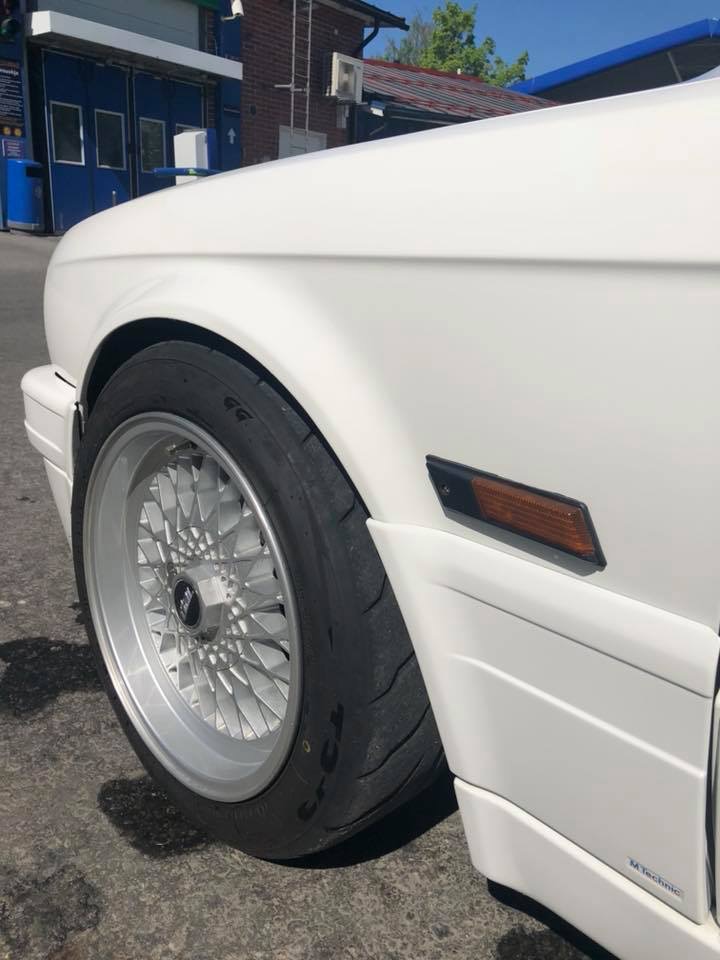Note: if you have not read my previous posts, I suggest you to start with the Part 1.
When I bought the E30, it felt almost undrivable and plain dangerous in higher speeds. Thus, it was quite obvious I had to spent the first driving season to improve its handling. The list below is summing up the modifications I made for the E30 during summer 2015:
- Correcting the suspension geometry and roll center by installing custom made raiser plates,
- Raising the car approx. three times,
- Decreasing negative camber on the front by installing eccentric upper strut mounts,
- Increasing offset on the front by machining rims,
- Zeroing toe on the front,
- Increasing traction by changing tires to Toyo R888R Semi Slicks.
At times I was wondering if the V8 engine is too heavy, and despite of all the changes, non of the above tricks will work. But the engine was not the case. And M60 engine is all aluminum, and with small tricks here and there you can save tens of kilograms. But that’s the other story. So what was the end result? I use my daily commuter as the reference point. It is 2009 BMW 335d LCI with factory M-sports aerodynamic kit, M-sport suspension and OEM 18″ alloy wheels. So the reference car is representing a pretty darn good car design from 21st century.
So how does the E30 compare to the 335? Well, I can honestly say – because I own both cars – that the E30 will beat mighty 335 in EVERY aspect of driving. The E30 is more agile, has better feel for road and – what’s most important – is more fun to drive. I cannot say that the 335 is a bad car to drive. No way. I was driving through Norway with the 335 in summer 2018, and it was a great pleasure to drive with a ton of torque in twisty serpentine roads. Of course, there is some features the 335 is missing like limited slip differential, which actually makes a huge favor for the E30. I know, it is a bit unfair comparison, due to the E30 has a custom built race differential in it.

So the E30 is more fun to drive on twisty roads. OK, we can accept that, because it is around 400 kilograms lighter than the 335. But how about high speed stability after the mods? I got an opportunity to test both cars on a airstrip, and oh boy, that was a great fun! It was a windy day, and I was a bit frightened to try the E30, because I had no idea if it will either start flying off from the airstrip, or keep going like it should be. The result was, that in 250km/h speed I did not notice any wind or unbalance when I was driving the E30. Actually I was watching the speedometer and using only one hand on a steering wheel. While on the 335 I noticed the wind, and had to put both hands on a steering wheel. Do you believe it? A 30 years old Bayerische Motoren Werke is beating 20 years and three generations newer 335 in high speed stability too. The handling in my E30 seems to be working. Amen.





